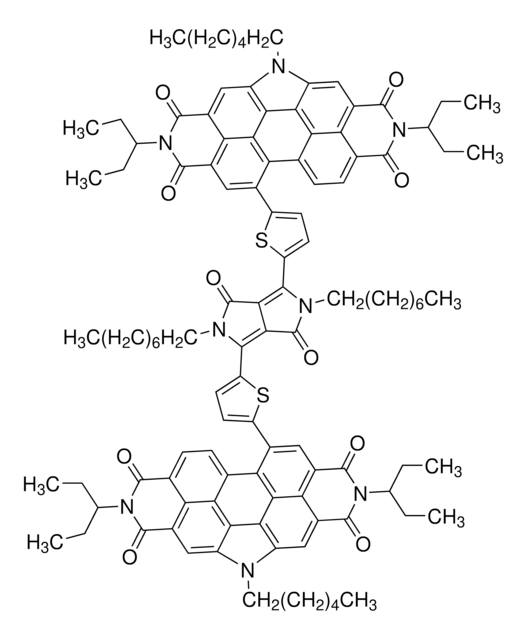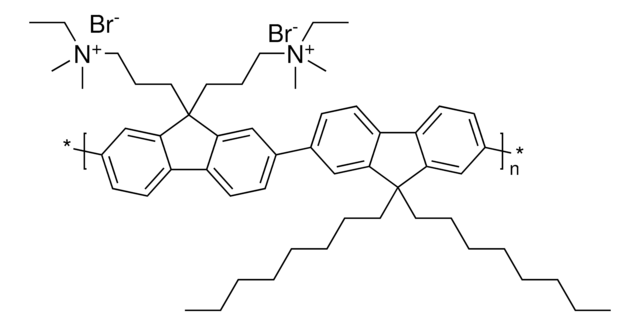About This Item
おすすめの製品
詳細
Band gap: 1.55 eV
アッセイ
≥99%
フォーム
solid
溶解性
chloroform: soluble
軌道エネルギー
HOMO -5.65 eV
LUMO -4.10 eV
SMILES記法
Fc1cc2c(cc1F)C(=C(C#N)C#N)\C(=C\c3[s]c4c([s]c5c4[n](c6c7[n](c8c([s]c%10c8[s]c(c%10CCCCCCCCCCC)\C=C%11/C(=O)c%12c(cc(c(c%12)F)F)C/%11=C(C#N)C#N)c7c9n[s]nc9c65)CC(CCCC)CC)CC(CCCC)CC)c3CCCCCCCCCCC)\C2=O
InChI Key
XJRVXAOYOOOQLU-LAGONYLDSA-N
類似した製品をお探しですか? 訪問 製品比較ガイド
関連するカテゴリー
詳細
アプリケーション
保管分類コード
11 - Combustible Solids
WGK
WGK 3
引火点(°F)
Not applicable
引火点(℃)
Not applicable
適用法令
試験研究用途を考慮した関連法令を主に挙げております。化学物質以外については、一部の情報のみ提供しています。 製品を安全かつ合法的に使用することは、使用者の義務です。最新情報により修正される場合があります。WEBの反映には時間を要することがあるため、適宜SDSをご参照ください。
毒物及び劇物取締法
劇物
Jan Code
908509-BULK:
908509-100MG:4548173360959
908509-VAR:
最新バージョンのいずれかを選択してください:
この製品を見ている人はこちらもチェック
資料
The emerging organic photovoltaic (OPV) technology is very promising for low-cost solar energy production.
Professor Chen (Nankai University, China) and his team explain the strategies behind their recent record-breaking organic solar cells, reaching a power conversion efficiency of 17.3%.
関連コンテンツ
有機エレクトロニクスは、有機導電体や有機半導体を用いて、有機太陽電池、有機EL、有機電界効果トランジスタなどの応用実現を目指す分野です。
Organic electronics utilizes organic conductors and semiconductors for applications in organic photovoltaics, organic light-emitting diodes, and organic field-effect transistors.
Global Trade Item Number
| カタログ番号 | GTIN |
|---|---|
| 908509-100MG |
ライフサイエンス、有機合成、材料科学、クロマトグラフィー、分析など、あらゆる分野の研究に経験のあるメンバーがおります。.
製品に関するお問い合わせはこちら(テクニカルサービス)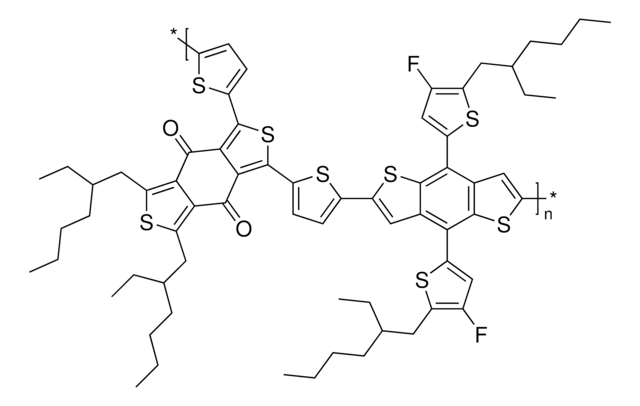


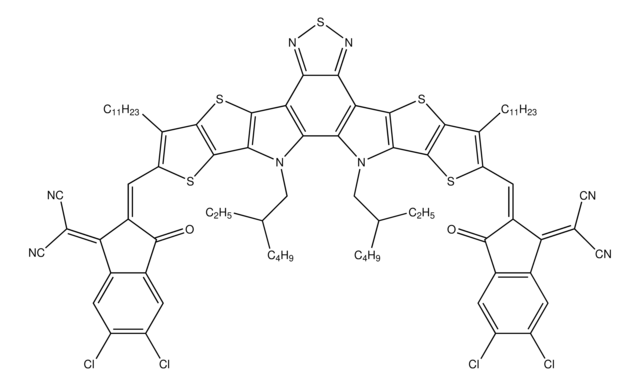
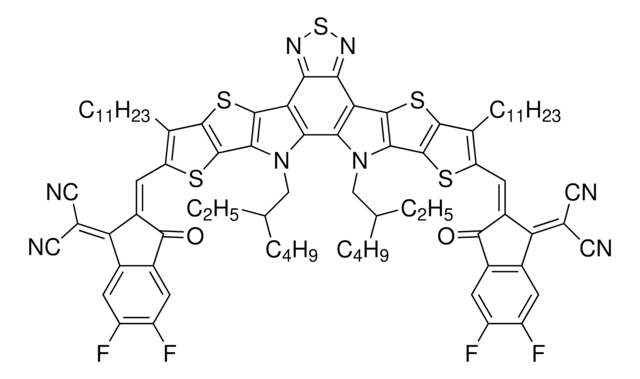
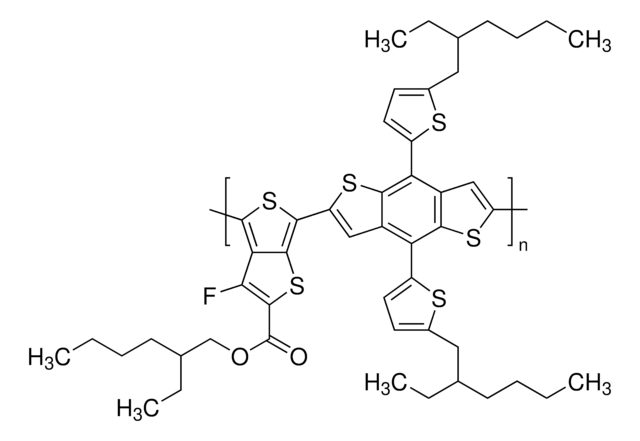
![[6,6]-フェニルC61ブタン酸メチルエステル ≥99%](/deepweb/assets/sigmaaldrich/product/structures/359/221/d990c746-0960-4c69-bf76-fe09b193824d/640/d990c746-0960-4c69-bf76-fe09b193824d.png)
![2,5-ジヒドロ-3,6-ジ-2-チエニル-ピロロ[3,4-c]ピロール-1,4-ジオン 97%](/deepweb/assets/sigmaaldrich/product/structures/209/681/63a4048f-a2a7-496b-814d-ccb4b5b76124/640/63a4048f-a2a7-496b-814d-ccb4b5b76124.png)
